Kazuyo Sejima is a renowned Japanese architect with numerous awards and honors for her distinctive works. She was born in 1956 in Ibaraki, Japan. As a child, she saw a photograph of a house created by the famous architect Kazuo Shinohara, and its beauty captivated her to the point where she decided to study architecture at university. She achieved this aim in 1979 by graduating from Japan Women’s University. After her bachelor’s degree, she completed her Master’s Degree in architecture in 1981.
Sejima began working with the architecture firm Toyo Ito and Associates in the same year and continued to work with them until 1987. In 1987, she decided to go out independently and established Kazuyo Sejima & Associates. Her initial solo works reflect an attraction to transience and neutrality. With rapidly gaining national recognition for her work, Sejimai gained the Young Architect of the Year award in 1992.

Sejima’s primary design considerations are the social use of space and its relationship with the environment. Following this idea, Kazuyo Sejima contends that the place cannot be completed unless its activities are realized. Sejima is known for her clean lines and significant use of materials, including glass, marble, and metal, in its buildings. Following modernist ideals, the architect organizes her structures in her own distinct style. Squares and cubes are her most preferred shapes, and they can be found in practically all of her works. Sejima believes that the outdoor spaces must be integrated with the building’s inside while emphasizing establishing a visual connection between the interior and exterior of her buildings.
“Architecture could be a temporary phenomenon that appears in an action-maker’s awareness and images, while actions move across the locale.”
Kazuyo Sejima
In 1995, she co-founded SANAA (Sejima and Nishizawa and Associates) with Ryue Nishizawa, and their work together gained more fame. They were noted for their constant style while still finding methods to make each structure reflect its unique location. The works of SANAA had a significant impact on defining 21st-century Japanese architecture. Sejima’s works both individually and within SANAA, were praised with various awards. Sejima was the second woman to be awarded the Pritzker Prize, along with Nishizawa.
SANAA
SANAA was co-founded by Kazuyo Sejima and Ryue Nishizawa in 1995. The studio is one of the most influential studios in contemporary architecture. The majority of SANAA’s early projects were based in Japan. The minimalist lines of modern Japanese architecture inspire Kazuyo Sejima and Ryue Nishizawa’s collaborative works. Their architecture is easily recognizable, as they’ve skillfully integrated oriental design elements into Western sensibilities, forging a unique architectural vocabulary that particularly emphasizes the interplay of light and perception.
The New Museum of New York City, the IVAM in Spain, the Rolex Learning Center in Switzerland, and the Louvre-Lens in France are among the projects in Studio’s portfolio. In Japan, they designed two of the country’s most important national art museums, Nagano’s O-Museum and Kanazawa’s 21st Century Museum of Contemporary Art, as well as a number of shops, offices, and other public spaces. They became particularly interested in investigating the relationship between the inside and outside, with Sejima citing the natural surroundings of a building as her primary source of inspiration when selecting materials and shapes.
Here are SANAA’s unique lines in projects along with 6 influencing works that have great architectural value:
1. 21st Century Museum of Contemporary Art
Location: Kanazawa, Japan
Year: 2004
The 21st Century Museum of Contemporary Art project is located in Ishikawa Prefecture, the city of Kanazawa. The city represents an important historical center for the country. The structure, inscribed in a circle 112.5 meters in diameter, is situated in an irregularly shaped open public park that is close to the urban center. In addition to museum displays, the project includes collective spaces for the benefit of locals, such as a library, a lecture hall, a courtyard, and workshop halls. One of the challenges for the project was to create a balance and blur the lines between public and private areas. Therefore Sejima and Nishikawa proposed a mixed-use layout organization around four courtyards. The smooth transition also allows the circulation areas to serve as exhibition areas at times.
The public spaces are placed along the outer perimeter and encircle the museum zones. This design decision allows the interaction and division of central space to be divided into independent galleries. All surrounding corridors also allow visitors to freely explore and experience new circulation paths. The large roof covers all independent locations and serves as a unifying element in the design.
The division of the interior space into different types of areas based on elementary geometric forms yields a set of pure volumes.
The white boxes and cylinders poking through the flat roof surface give it a distinct appearance. Each one houses an exhibition gallery that can be distinguished from the others by its form, size, and proportion, with ceiling heights ranging from four to twelve meters, as well as the various lighting options it offers. Some have no natural light at all, while others have large skylights with shading mechanisms to control the intensity of the light. The natural light provided by the four completely glazed courtyards located in the central space and the curtain wall that wraps the area around it, blurring the boundaries between the interior and the exterior and generating a cyclical plan along a perimeter gallery that offers panoramic views over the surroundings, nuance the noticeable difference between the bright halls and the dark corridors.
2. Zollverein School of Management and Design
Location: Essen, Germany
Year: 2006
The Zollverein School of Management and Design project is located in the center of the Ruhr area, the city of Essen, on the main access road to the former mine Zeche Zeolverein, which was designated as a World Heritage Site in 2001. The project also is a subject of the master plan designed by OMA. The building is SANAA’s first large-scale project outside Japan. Kazuyo Sejima and Ryue Nishizawa won the competition with the masterplan designed by Rem Koolhaas which is set to be a large cultural center, including art and design. It became the first new building completed on the historical site.
The design is an almost perfect cube with 35mx35m dimensions. The open plan in the interior spaces and the ratio of transparency are the distinctive features of the project. To maximize usable surface area, the load-bearing capacity is distributed among the external enclosure, which is perforated by numerous openings of varying size and random composition, two circular-section slender steel columns, and three communication cores. The program is divided into four levels with 1,200 square meters of surface each for teaching, research, and practical implementation, topped off by a rooftop garden with views of the industrial landscape. The reception area, an auditorium, a cafeteria, and a small exhibition area are on the ground floor, while the workspaces are on the second floor that is nearly ten meters high. The third and fourth floors house the library, which has study areas and seminars, as well as the offices, which are divided into different modules by thin glass walls.
The project includes a unique feature, that is, thermally active isolation. A number of possible facade solutions for insulation and energy savings were discarded due to aesthetic and economic reasons for the project. Rather, SANAA decided to use one of the mine’s resources: water. Since an important amount of water is being pumped from deep to prevent surface pressure and flooding of nearby mines to the Emscher River, the system allows the use of this water. In this system, the water flows through a heat exchanger consisting of a network of pipes hidden in the walls. The heat not only serves as central heating but also acts as passive thermal insulation, lowering CO2 emissions.
3. Tsuruoka Cultural Hall
Location: Tsuruoka, Japan
Year: 2018
Tsuruoka Cultural Hall is a multipurpose hall that serves as a hub for cultural and artistic activities in the region. The surrounding area is distinguished by its abundant natural beauty, and it is located in a cultural district of the city that includes historic buildings, universities, and galleries. A building was sought to expand local civic activities while incorporating the old cultural hall, which had served as the heart of cultural activities for students and local arts groups.
The building has an attractive form that reminds of traditional Japanese architectural elements. The design proposes a large hall wrapped by a corridor that resembles traditional Japanese ‘Saya-do’ construction and acts as a hall for the community where citizens become participants, observers, and actors. The corridor is open to the public on a daily basis and can be active in a variety of locations without distinguishing between front and backhouse spaces.
The building’s exterior resembles an arrangement of small roofs. Each small roof gets lower as it gets closer to the building’s perimeter, and it gets as low as a one-story building along the road. The team aimed to create a building that is in harmony with the adjacent historic building and the surrounding cityscape by controlling the volume in this manner.
4. Grace Farms (The River)
Location: New Canaan, United States
Year: 2015
Grace Farms is a landscape and building design located on 32 hectares in New Canaan, Connecticut. Grace Farms Foundation, is a non-profit organization; this project aims to provide space for people to experience nature, observe justice with this foundation, meet with art, grow the community within the foundation, and discover trust. The project was implemented by the Grace Community Church Foundation and similar foundations. Grace Farms is a project that can host many events, and provide a venue for concerts, family-friendly art classes, and multidisciplinary cultural projects.
The River begins on a knoll in the rolling landscape of Grace Farms and flows down the long, gentle slope in a series of bends, forming pond-like spaces along the way. The glass, concrete, steel, and wood structure is essentially a single long roof that appears to float above the ground as it twists and turns across the landscape. The transparent walkways, courtyards, and glass-wrapped volumes that form beneath the roof invite people to interact with the expansive natural surroundings.
“Our goal with the river (building) is to make the architecture become part of the landscape without drawing attention to itself, or even feeling like a building, we hope that those who are on property with have a greater enjoyment of the beautiful environment and changing seasons through the spaces and experience by the river.” said Kazuyo Sejima.
5. Sydney Modern Museum
Location: Sydney, Australia
Year: 2022
The Sydney Modern Museum is SANAA’s first project in Australia. It is an important transformation project of the 151-year-old Art Gallery of New South Wales to create an art museum campus consisting of two buildings connected by an Art Garden on Gadigal Country overlooking Sydney Harbour.
SANAA’s design for the new building responds to the unique project site with a series of interlocking pavilions that gently step down towards Sydney Harbour, as a complementary counterpart to the Art Gallery’s revitalized original building with its 19th-century neoclassical facade. The pavilions are designed to be low and light on the ground, following the natural topography of the land. The architectural plan includes exhibition areas that coexist with the natural surroundings while preserving and highlighting important trees and improving access to Sydney’s eastern cultural district. The new structure also includes areas for art research and education, flexible spaces, a gallery store, dining options, and visitor services.
While each pavilion includes inspiring details from rammed earth walls to clean spiral grand staircases, the building has the potential to become a landmark for the city quickly. The project incorporates a variety of sustainable design practices. These include exclusively using renewable energy sources and producing 10% of total energy requirements through a solar panel array in the Entrance Pavilion. These efforts, along with the installation of green roofs and rainwater collection and management systems, have resulted in the North Building of the Sydney Modern Project receiving a 6-Star Green Star design rating under the Green Building Council of Australia’s prestigious evaluation system.
6. Louvre Lens
Location: Lens, France
Year: 2006
Louvre Lens is one of the most known projects of SANAA. The project was designed in collaboration with the SANAA team, Imrey Culbert, a New York-based studio, and landscape designer Catherine. The decision to locate the museum on a former mine demonstrates the museum’s intention to participate in the conversion of the mining area while preserving the richness of its industrial past. The Louvre-Lens site is situated on 20 hectares of wasteland that was once a major coal mine but has since been reclaimed by nature following its closure in 1960.
Kazuyo Sejima and Ryue Nishizawa wanted to avoid creating a dominant fortress, instead opting for a low, easily accessible structure that integrates into the site without imposing its presence. The structure is composed of five steel and glass buildings. There are four rectangles and one large square with slightly curved walls whose angles intersect. It is reminiscent of the Louvre Palace, with its wings almost flattened. The polished aluminum facades reflect the park, forming a seamless link between the museum and its surroundings. The glass on the roofs allows natural light to enter the building, which is beneficial for both displaying artwork and providing views of the sky from within. Natural light is controlled by a hidden mechanism in the roof and internal shades that make up the ceiling. This vaulted ceiling-inspired design captures the changing play of seasons, time of day, and changing exhibitions in the quality of its light.




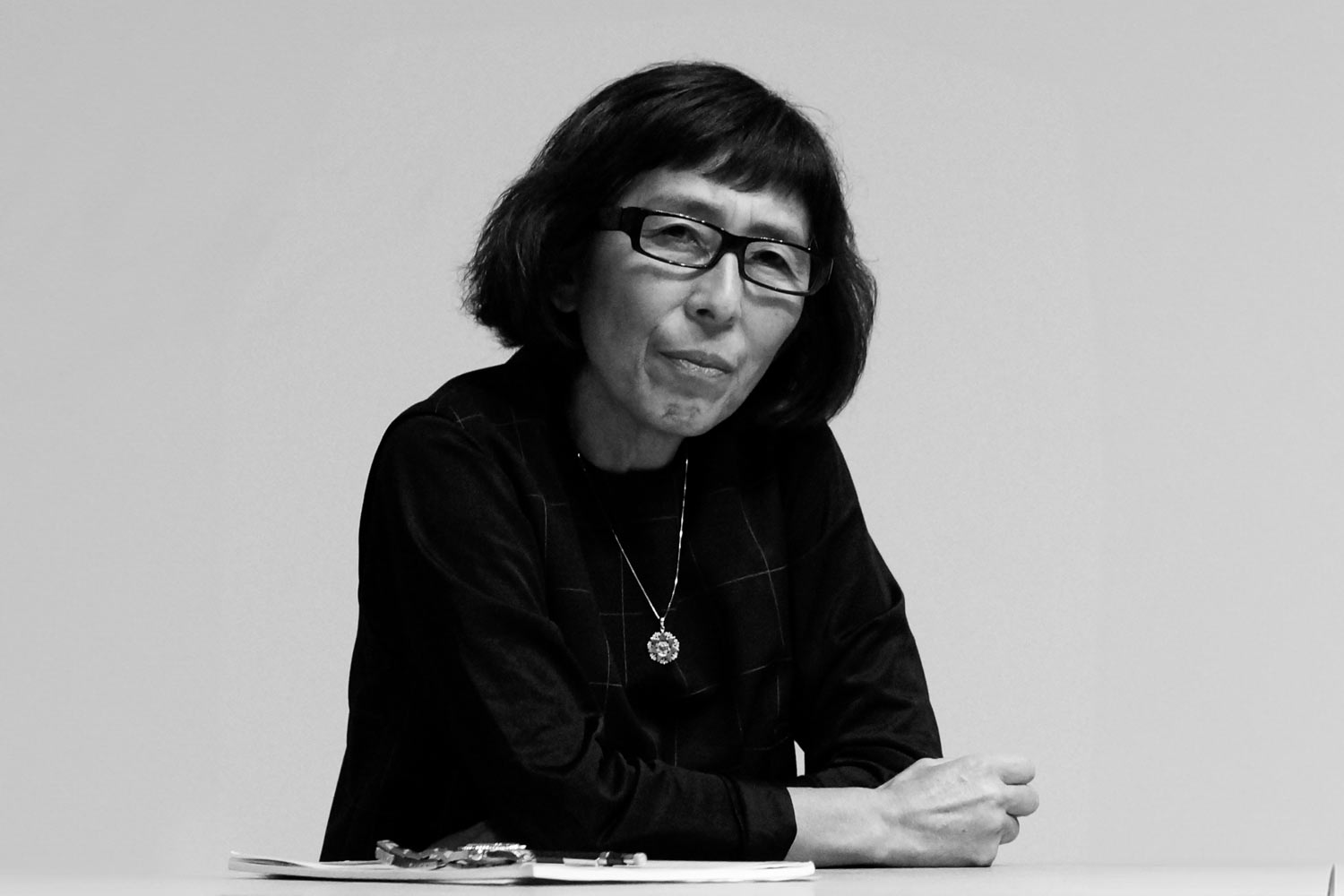
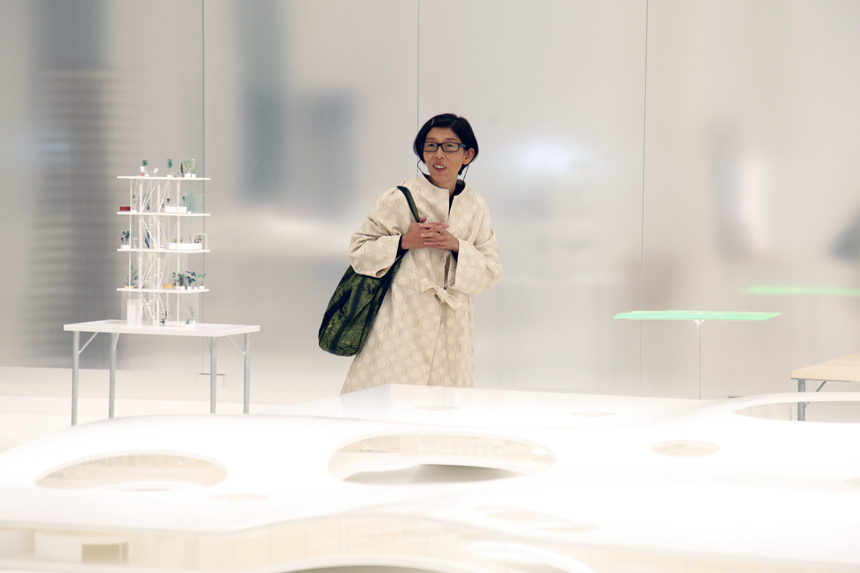
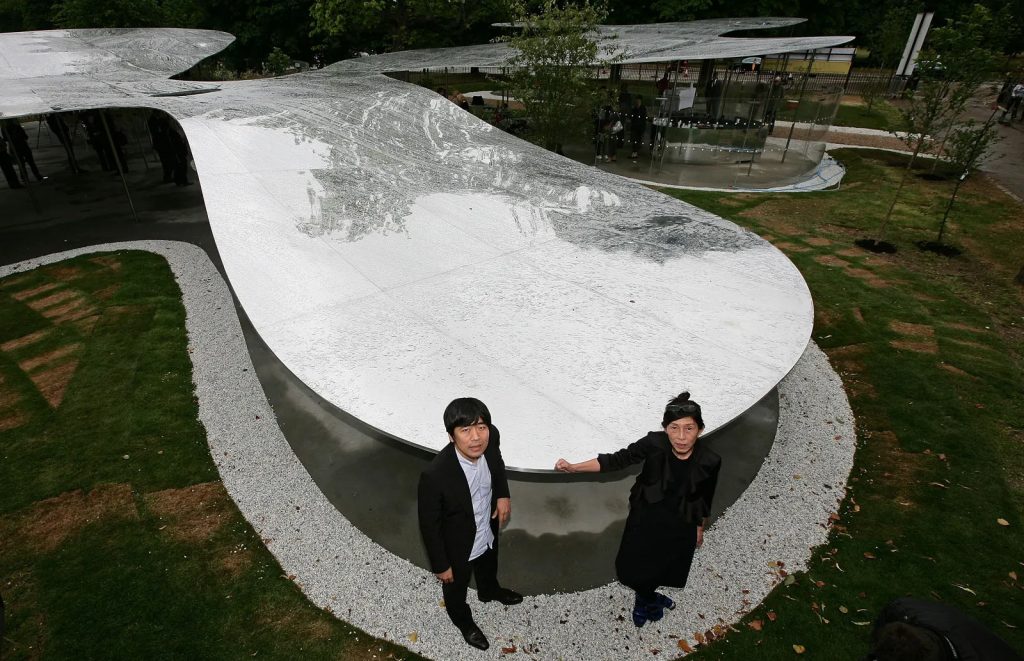
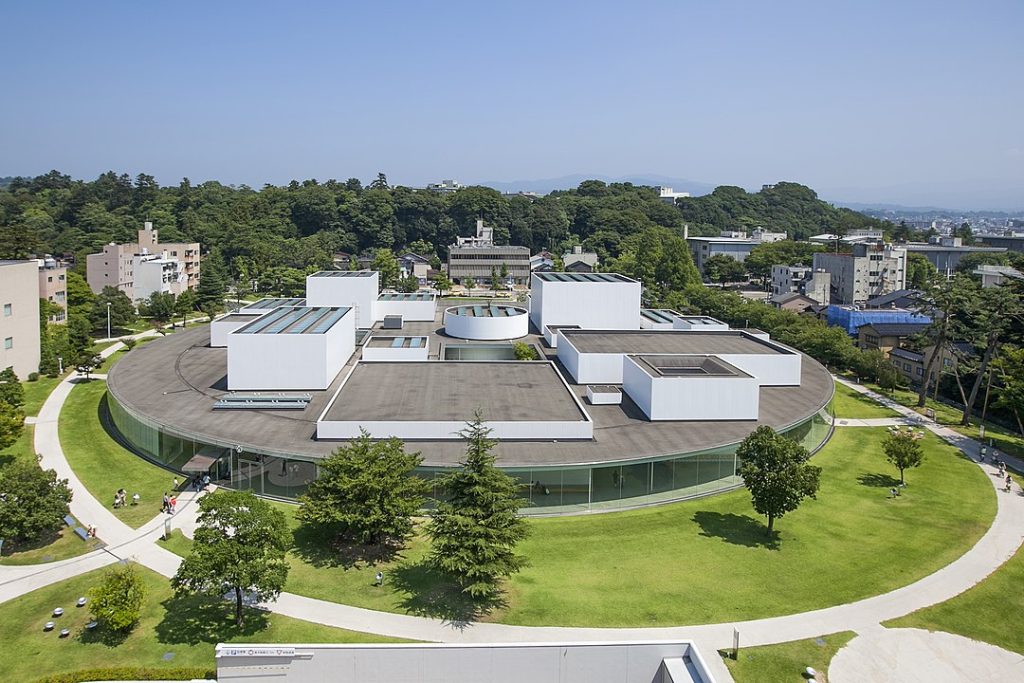
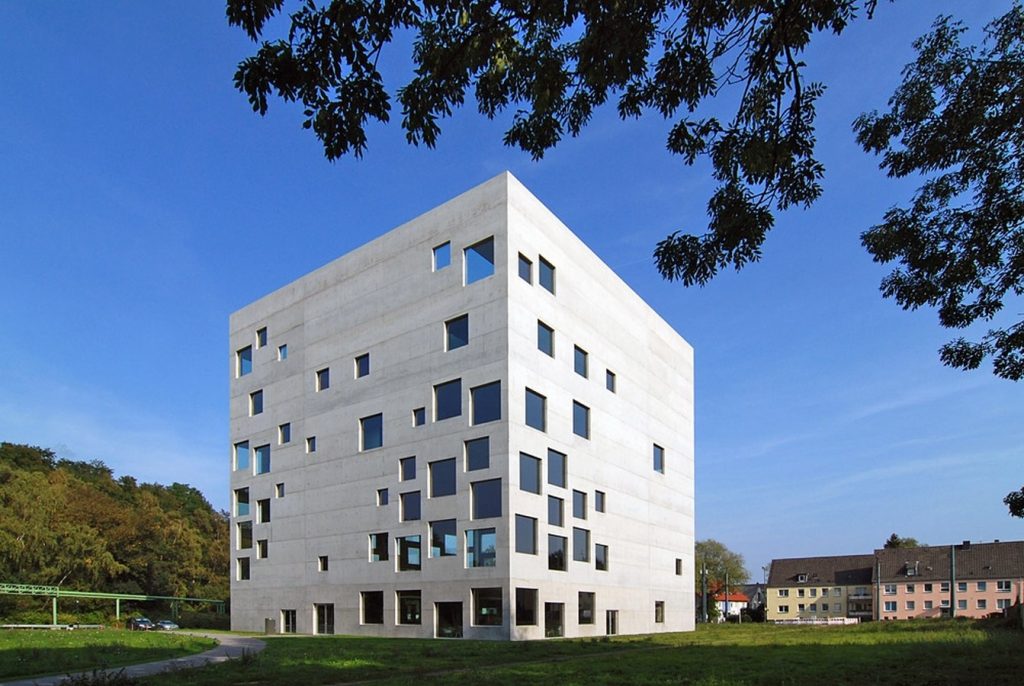
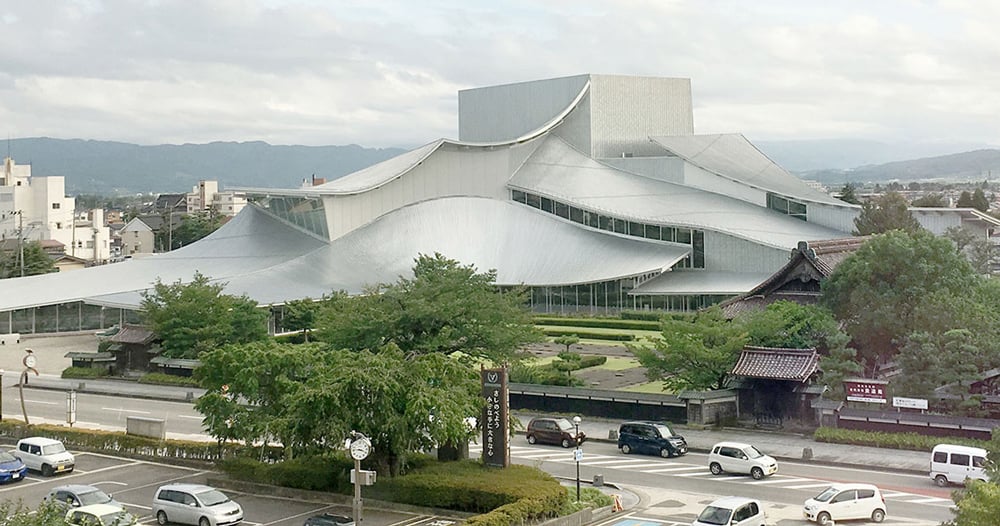

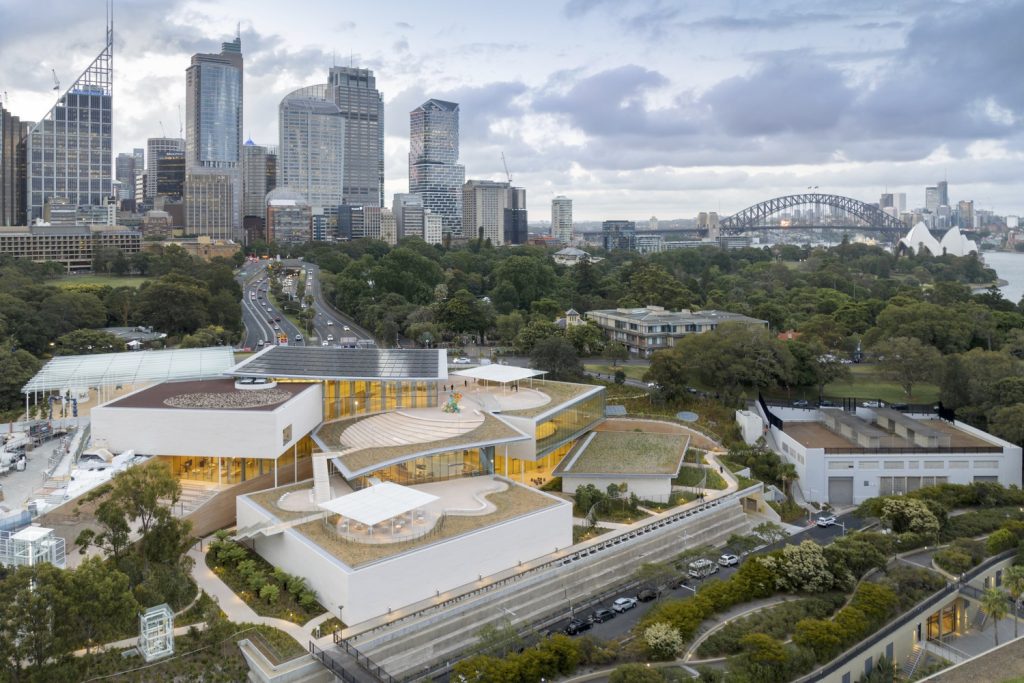
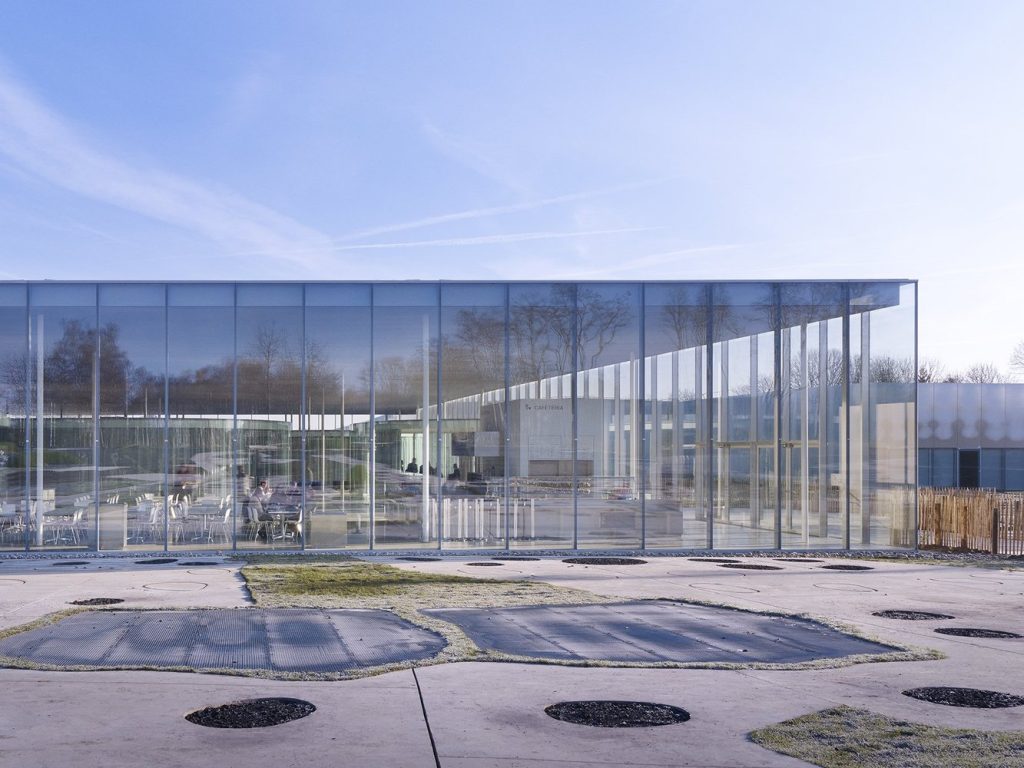














Leave a comment